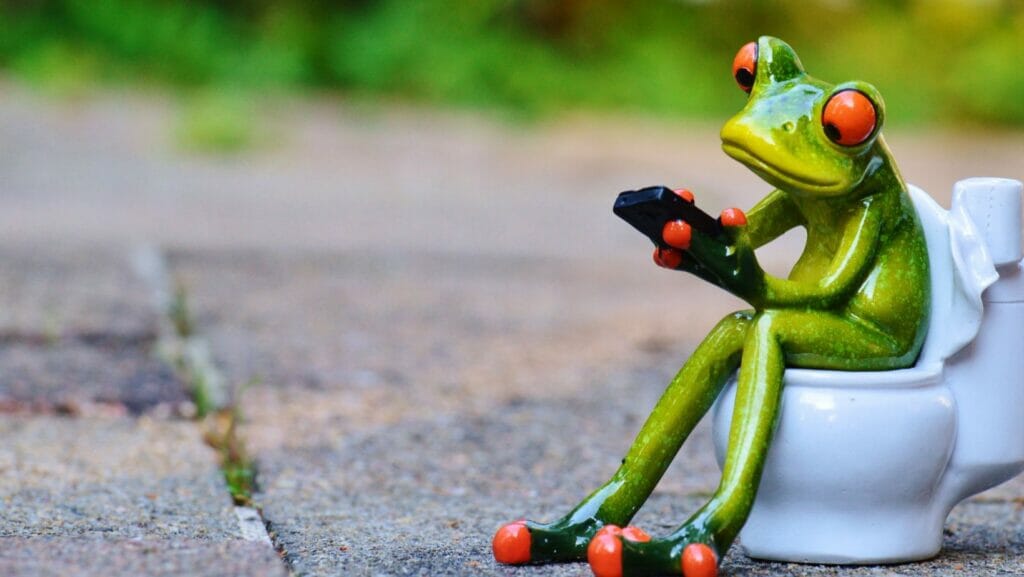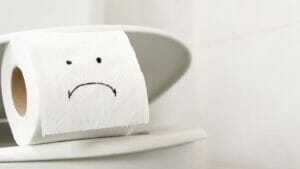
Have you ever noticed a mysterious red ring in your toilet bowl and wondered what could have caused it? Well, we’re here to explain why water can unexpectedly leave a red mark around the inside of the toilet bowl, and why you shouldn’t worry too much about it! Let’s dive right into the mystery of the red ring in the toilet bowl.
Why does the water form a red ring in the toilet bowl?
Have you ever wondered why water in the toilet bowl forms a red ring? This is due to bacteria. As the water level in the bowl fluctuates it creates an environment favorable for the growth of certain bacteria, such as trichlorforce. This bacterium produces a reddish color known as “red water” which can cause staining on porcelain or other surfaces that are not regularly cleaned or disinfected. In addition, when this bacterium metabolizes, its byproducts can cause corrosion and damage to plumbing systems. The best way to prevent this from occurring is to regularly clean and disinfect your toilet.
Iron deposits
Toilet bowls often have a red ring that appears near the water line. This is due to iron deposits from hard water or rust in the plumbing system, which can discolor the porcelain and leave a reddish-brown stain. Iron is highly reactive and will often incorporate itself into the mineral structure of the porcelain, making it difficult to remove. The easiest way to prevent this staining is to install a water filter that removes iron before it enters your home’s pipes. Additionally, you can use toilet cleaning agents specifically designed to remove iron stains from toilets. Over time, these methods can help reduce and eventually eliminate the red ring in your toilet bowl.
Serratia marcescens
Serratia marcescens is a bacterium commonly found in bathroom and kitchen environments. This species of bacteria can produce a red pigment called prodigiosin that is emitted into the environment to create a rust-colored ring on surfaces, such as toilet bowls and sinks. It is important to note that Serratia marcescens does not pose any significant human health hazard, although some strains may be harmful if consumed by humans or pets.

How do I get rid of red rings in the toilet bowl
Red rings in the toilet bowl may be caused by a combination of rust and iron or manganese deposits. The presence of iron and/or manganese in water is often caused by excessive amounts of minerals that occur naturally in the water source or in your pipes. Manganese is the cause when total dissolved solids (TDS) exceed 250 parts per million (ppm).
To remove red rings from your toilet bowl, first you will need to identify the possible cause. For example, if you have very hard water then you may want to look into getting a home softener system installed to reduce the amount of minerals found in your water supply.
Once you’ve identified the potential cause, there are several strategies for eliminating stains from hard water minerals:
-Cleaning with a Vinegar Solution: White vinegar can help to break down mineral deposits and help remove red ring stains from your toilet bowl. Mix one part white vinegar with two parts warm water and apply it directly to the stain with a clean cloth or sponge. Allow it to sit for at least 15 minutes before scrubbing it off with a brush. If necessary, repeat this process regularly until all traces of discoloration have disappeared.

Removal of red rings caused by mineral deposits
Using a strong cleaner and some elbow grease is a great way to remove mineral deposits that cause red rings in the toilet bowl. Check for an appropriate cleaner recommended by the manufacturer and use gloves when handling. Put your gloves on, pour in the correct amount of cleaner, and scrub all surfaces with a toilet brush until the red ring begins to fade. Rinse with cold water and scrub again if there is any residue left from the cleaner.
It’s also important to flush out any remaining chemicals by running a full load of clean water in order to avoid any damage or discoloration of your toilet bowl surfaces. Once you’ve scrubbed and flushed, use bar keepers friend or hydrochloric acid mixed with water (1 part acid to 10 parts water) as directed on the product label in order to dissolve stubborn mineral stains or any remaining red rings. Afterwards, flush away this solution before using your toilet again, as it can be quite caustic if it remains on fixtures over time.












